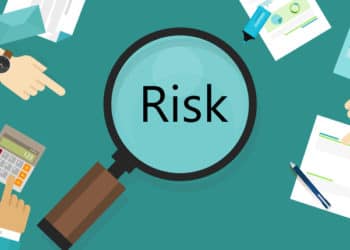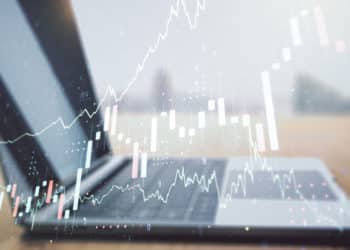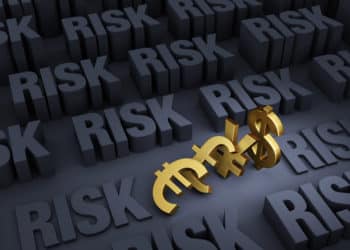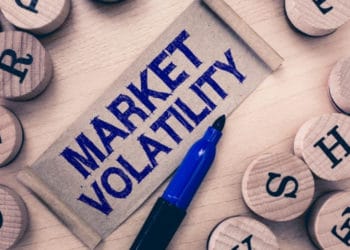Taking a position in forex is a relatively easy process. With mobile MT4 and MT5, you can enter a trade within a second. The same is true with other popular desktop trading platforms like MetaTrader and NinjaTrader. However, most experienced traders take a systematic approach when initiating trades. In this article, we will look at several key confirmations that you must always have before you initiate a trade.
A catalyst
One of the most important confirmations you must always have before you initiate a forex trade is a catalyst. A catalyst simply refers to the main reason why you are either buying or selling a financial asset. For example, you might sell the EURUSD pair because you expect that the Federal Reserve will suddenly turn hawkish.
Also, you may sell the pair because you expect that certain economic data like non-farm payrolls (NFP) will come out stronger than expected.
Fortunately, there are many catalysts that can see you initiate a trade in the forex market. First, there are political catalysts that could lead to price action in forex. For example, traders who sold the GBPUSD pair after Brexit did so because they expected that the UK economy would have some weaknesses.
Second, there are economic data catalysts. Some of the most popular economic numbers in the market today are employment, inflation, Gross Domestic Product (GDP), and retail sales. Therefore, you might buy the EURUSD after the European Central Bank (ECB) delivers a hawkish interest rate decision.
Third, there are technical catalysts. For example, you might decide to buy the EURUSD pair when the 25-day and 50-day Moving Averages (MA) make a bullish reversal pattern. You can also decide to buy the pair when a popular oscillator like the Relative Strength Index (RSI) moves to the oversold level. Also, you could buy the pair when it moves above the Ichimoku cloud.
In addition, there are candlestick-related catalysts that can guide you to open a trade. Some of the most popular candlestick patterns are the three white soldiers, bullish and bearish engulfing patterns, doji, and the evening star.
Meanwhile, you can also have chart pattern-related catalysts like triangles, bullish and bearish flags, rising and falling wedges, and heads and shoulders patterns.
When you have one or more of these catalysts, you can be comfortable knowing that you have a reason for opening a trade. In most cases, many day traders make the mistake of opening trades without a catalyst.
Support and resistance levels
Another important confirmation you should always have in forex is on support and resistance levels. For starters, support is defined as a level where a currency pair or any other asset struggles to go before. A resistance, on the other hand, is a ceiling where the asset struggles moving above. For example, if the EURUSD is struggling to move above 1.1225, this is known as resistance. If it is struggling to move below 1.1550, this level is known as support.
Support and resistance levels are so important in forex trading because they show where to set a take-profit and a stop-loss.
Therefore, before you open a trade in forex, always ensure that you know where the support and resistance levels are. Also, do a multi-timeframe analysis, where you look at the pair’s pricing across several timeframes. Doing a multi-timeframe analysis will help you confirm the formation of the two levels.
It matches your strategy
The next key confirmation you need before you enter a trade is that it matches your trading strategy. If you are an experienced trader, you likely have a trading strategy. You could be a scalper, a swing trader, or even a martingale trader. As such, you have spent several months or years testing your strategy.
Therefore, before you enter a trade, it is important for you to ensure that it matches your strategy. For example, if you are a trend follower, it will make no sense to open a bullish trade when a currency pair is in consolidation. Similarly, if you are a pairs trader, it will not make sense to open two trades of pairs that have no correlation.
A simple tool known as a trading journal can help you a great deal to ensure that you only open trades that match your strategy. The journal can be written on a piece of paper or in a digital notepad like Microsoft OneNote or Evernote. It will help you become more disciplined.
Potential exit levels
Before you enter a trade in forex, it is important for you to map the potential outcome of the trade. There are usually three potential outcomes. First, the ideal situation is where the trade ends in the positive zone. For example, if you bought the EURUSD at 1.1200, you will end in a profit if it moves above this level.
Second, your trade could end up in a loss zone. Sadly, this is usually the most common scenario. Finally, you could end the trade where it started and make no profit or loss at all.
Therefore, before you open a trade, you need to have a clear picture of the potential exit levels and traps. Having this confirmation means that you will be prepared for any scenario. You should then set stop-loss and a take-profit at the levels you identified.
Summary
A common mistake that many forex traders make is that of rushing to enter trades. In my experience, I have seen many traders use the simplicity of implementing trades to their disadvantage. They use simplicity to open trades in a hurry. In this article, we have looked at some of the key confirmations you need always to have when you are placing a trade in forex. Others that we have not mentioned are the relative volume, where you could go wrong, and other externalities that could come in.







